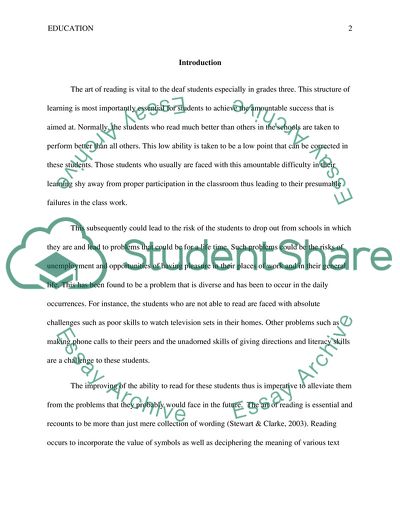Cite this document
(Development of Language in the Classroom Research Proposal Example | Topics and Well Written Essays - 1250 words, n.d.)
Development of Language in the Classroom Research Proposal Example | Topics and Well Written Essays - 1250 words. https://studentshare.org/education/1769192-how-to-effectively-improve-deaf-students-acquisition-of-new-reading-vocabulary-in-grades-three
Development of Language in the Classroom Research Proposal Example | Topics and Well Written Essays - 1250 words. https://studentshare.org/education/1769192-how-to-effectively-improve-deaf-students-acquisition-of-new-reading-vocabulary-in-grades-three
(Development of Language in the Classroom Research Proposal Example | Topics and Well Written Essays - 1250 Words)
Development of Language in the Classroom Research Proposal Example | Topics and Well Written Essays - 1250 Words. https://studentshare.org/education/1769192-how-to-effectively-improve-deaf-students-acquisition-of-new-reading-vocabulary-in-grades-three.
Development of Language in the Classroom Research Proposal Example | Topics and Well Written Essays - 1250 Words. https://studentshare.org/education/1769192-how-to-effectively-improve-deaf-students-acquisition-of-new-reading-vocabulary-in-grades-three.
“Development of Language in the Classroom Research Proposal Example | Topics and Well Written Essays - 1250 Words”. https://studentshare.org/education/1769192-how-to-effectively-improve-deaf-students-acquisition-of-new-reading-vocabulary-in-grades-three.


